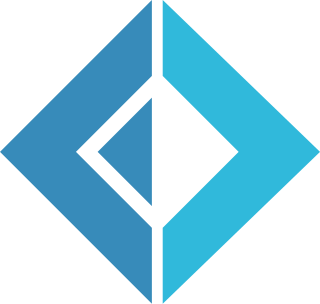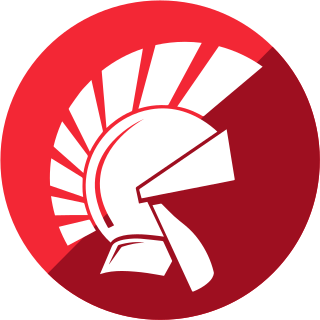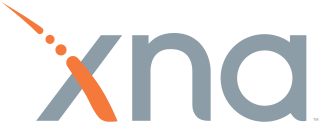
Lisp is a family of programming languages with a long history and a distinctive, fully parenthesized prefix notation. Originally specified in 1960, Lisp is the second-oldest high-level programming language still in common use, after Fortran. Lisp has changed since its early days, and many dialects have existed over its history. Today, the best-known general-purpose Lisp dialects are Common Lisp, Scheme, Racket, and Clojure.

In computer science, a library is a collection of non-volatile resources used by computer programs, often for software development. These may include configuration data, documentation, help data, message templates, pre-written code and subroutines, classes, values or type specifications. In IBM's OS/360 and its successors they are referred to as partitioned data sets.
In computer programming, unit testing is a software testing method by which individual units of source code—sets of one or more computer program modules together with associated control data, usage procedures, and operating procedures—are tested to determine whether they are fit for use. It is a standard step in development and implementation approaches such as Agile.

F# is a functional-first, general-purpose, strongly typed, multi-paradigm programming language that encompasses functional, imperative, and object-oriented programming methods. It is most often used as a cross-platform Common Language Infrastructure (CLI) language on .NET, but can also generate JavaScript and graphics processing unit (GPU) code.

Delphi is a general-purpose programming language and a software product that uses the Delphi dialect of the Object Pascal programming language and provides an integrated development environment (IDE) for rapid application development of desktop, mobile, web, and console software, currently developed and maintained by Embarcadero Technologies.

Apache Ant is a software tool for automating software build processes which originated from the Apache Tomcat project in early 2000 as a replacement for the Make build tool of Unix. It is similar to Make, but is implemented using the Java language and requires the Java platform. Unlike Make, which uses the Makefile format, Ant uses XML to describe the code build process and its dependencies.

Processing is a free graphical library and integrated development environment (IDE) built for the electronic arts, new media art, and visual design communities with the purpose of teaching non-programmers the fundamentals of computer programming in a visual context.

Microsoft XNA is a freeware set of tools with a managed runtime environment that Microsoft developed to facilitate video game development. XNA is based on .NET Framework, with versions that run on Windows and Xbox 360. XNA Game Studio can help develop XNA games. The XNA toolset was announced on March 24, 2004, at the Game Developers Conference in San Jose, California. A first Community Technology Preview of XNA Build was released on March 14, 2006.
Maven is a build automation tool used primarily for Java projects. Maven can also be used to build and manage projects written in C#, Ruby, Scala, and other languages. The Maven project is hosted by The Apache Software Foundation, where it was formerly part of the Jakarta Project.
The Spring Framework is an application framework and inversion of control container for the Java platform. The framework's core features can be used by any Java application, but there are extensions for building web applications on top of the Java EE platform. The framework does not impose any specific programming model.. The framework has become popular in the Java community as an addition to the Enterprise JavaBeans (EJB) model. The Spring Framework is free and open source software.
Qbs is a cross-platform free and open-source software for managing the build process of software. It was designed to support large, complex projects, written in any number of programming languages, primarily C/C++.

Clojure is a dynamic and functional dialect of the Lisp programming language on the Java platform.

sbt is an open-source build tool created explicitly for Scala and Java projects. It aims to streamline the procedure of constructing, compiling, testing, and packaging applications, libraries, and frameworks. sbt is highly adaptable, permitting developers to customize the build process according to their project's specific needs.
Dart is a programming language designed by Lars Bak and Kasper Lund and developed by Google. The programming language can be used to develop web and mobile apps as well as server and desktop applications.
Leiningen is a build automation and dependency management tool for the simple configuration of software projects written in the Clojure programming language.
Elixir is a functional, concurrent, high-level general-purpose programming language that runs on the BEAM virtual machine, which is also used to implement the Erlang programming language. Elixir builds on top of Erlang and shares the same abstractions for building distributed, fault-tolerant applications. Elixir also provides tooling and an extensible design. The latter is supported by compile-time metaprogramming with macros and polymorphism via protocols.

Bazel is a free and open-source software tool used for the automation of building and testing software. Google uses the build tool Blaze internally and released an open-sourced port of the Blaze tool as Bazel, named as an anagram of Blaze. Bazel was first released in March 2015 and was in beta status by September 2015.

Mix is a build automation tool for working with applications written in the Elixir programming language. Mix was created in 2012 by Anthony Grimes, who took inspiration from Clojure's Leiningen. Soon after, Mix was merged into the Elixir programming language itself and to this day is one of the six applications that are part of the Elixir language. Mix provides functionality for creating, compiling, and testing Elixir source code and for managing dependencies and deploying Elixir applications.










